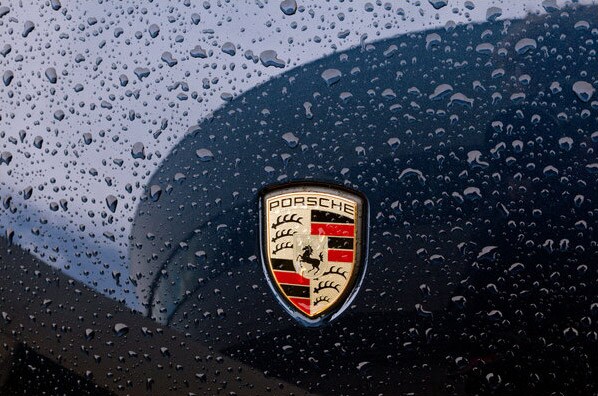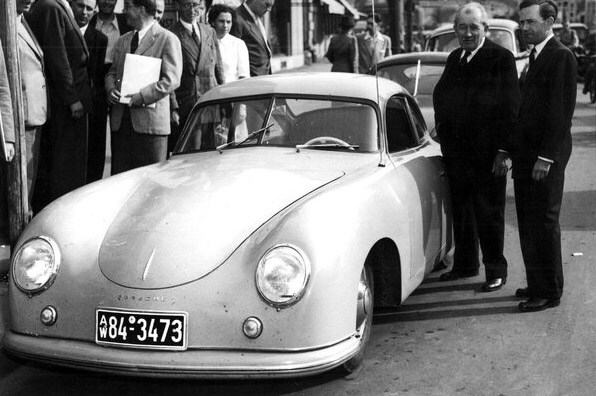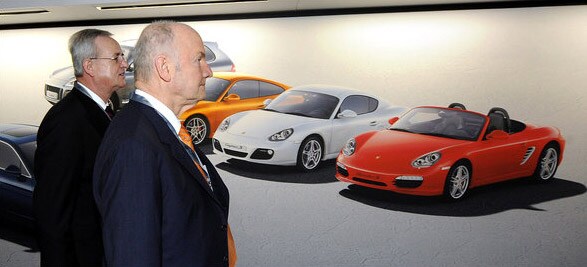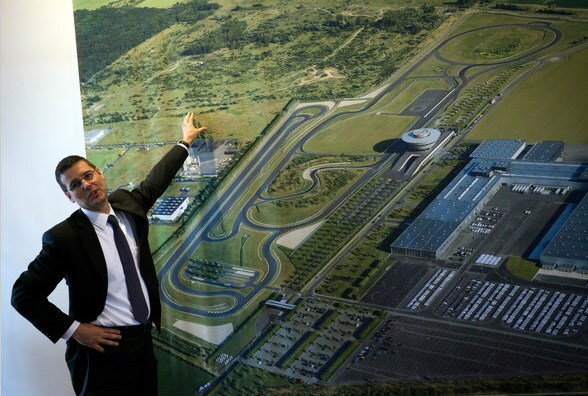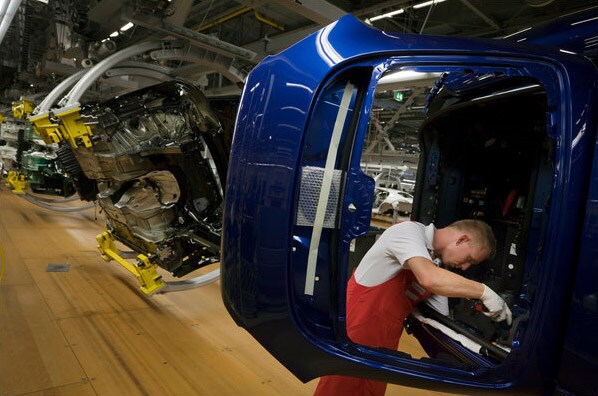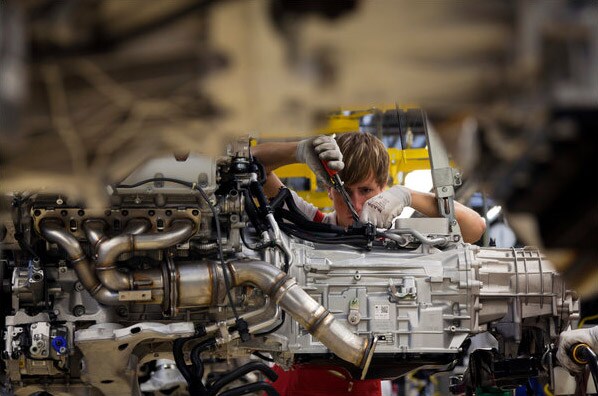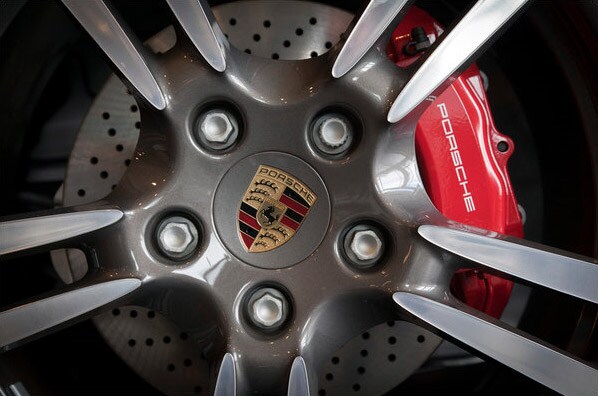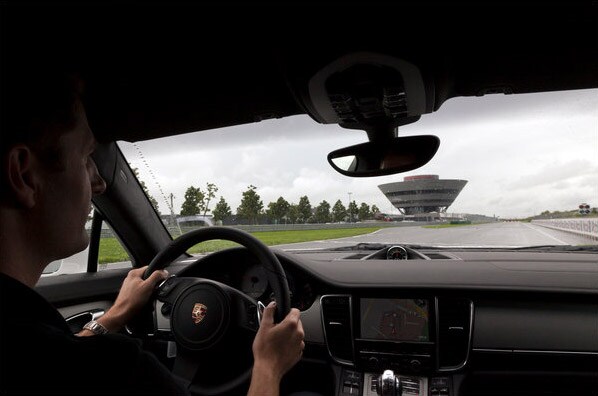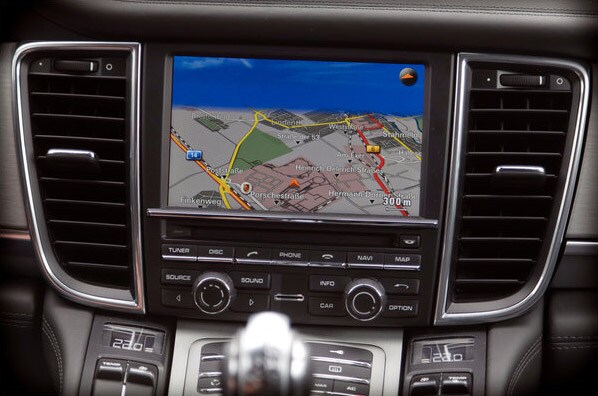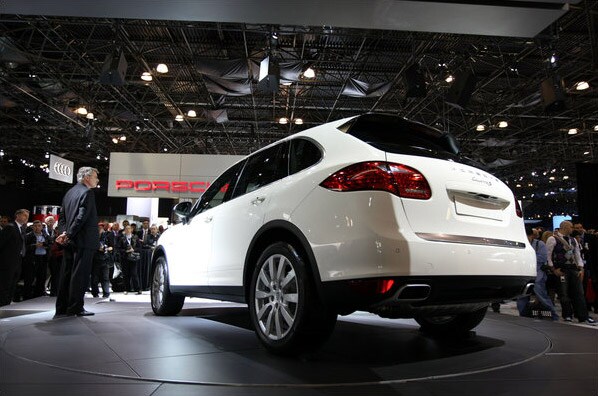The Porsche challenge in Volkswagen's embrace
The formal merger of Porsche and Volkswagen is not supposed to happen until next year at the earliest, but at the factory that produces Porsche Cayenne SUV's, it seems to have started years ago.
The painted Cayenne bodies arrive by train from a Volkswagen factory in Slovakia, where they are made alongside the similar VW Touareg. Likewise, the basic skin and skeleton of the new Porsche Panamera sedan, also assembled here, begins life at a VW factory in Hanover.
-
The Porsche brand has long been a favorite of motorists who prefer high-end exclusivity. Now some enthusiasts worry that the automaker's products could lose the touches that make them unmistakably Porsches when the company formally merges with the much larger Volkswagen next year. (NYT Photo)
-
Martin Winterkorn, VW's chief executive, left, with Ferdinand Piëch, the company's chairman, at the Porsche Museum in Stuttgart, Germany. Mr. Piëch, an engineer who was in charge of developing Porsche racecars during the 1960s, is the grandson of the Beetle designer Ferdinand Porsche.(NYT Photo)
-
The wheel of a 911, Porsche's signature sports brand. The road-hugging car, which can cost over $200,000, may not be suitable for some roads in emerging markets. But the company's family cars, including the Cayenne SUV, have allowed it to push into those countries.(NYT Photo)
-
“Environmentally friendly” and “SUV” usually do not go together. But Porsche's hybrid version of the Cayenne, on display here at the New York auto show in March, is an attempt to go green. The regular version is the automaker's best seller worldwide.(NYT Photo)

